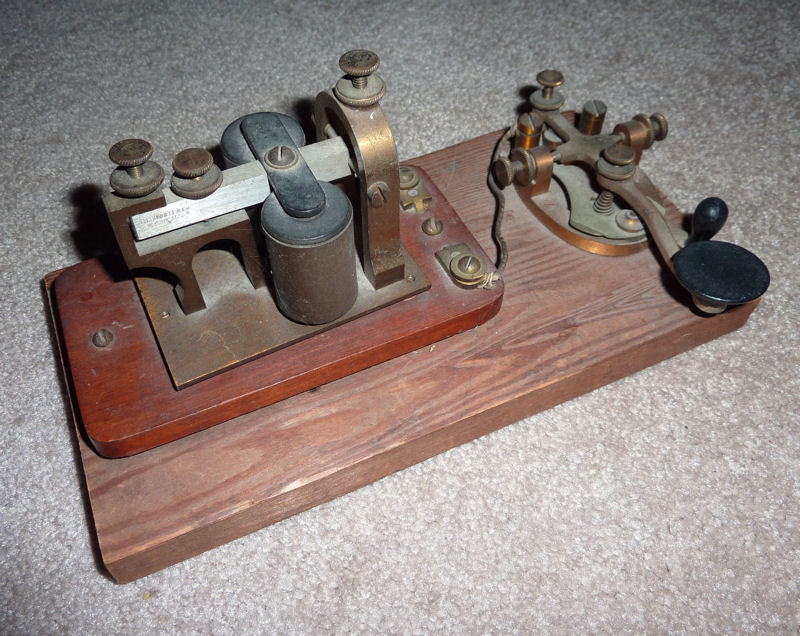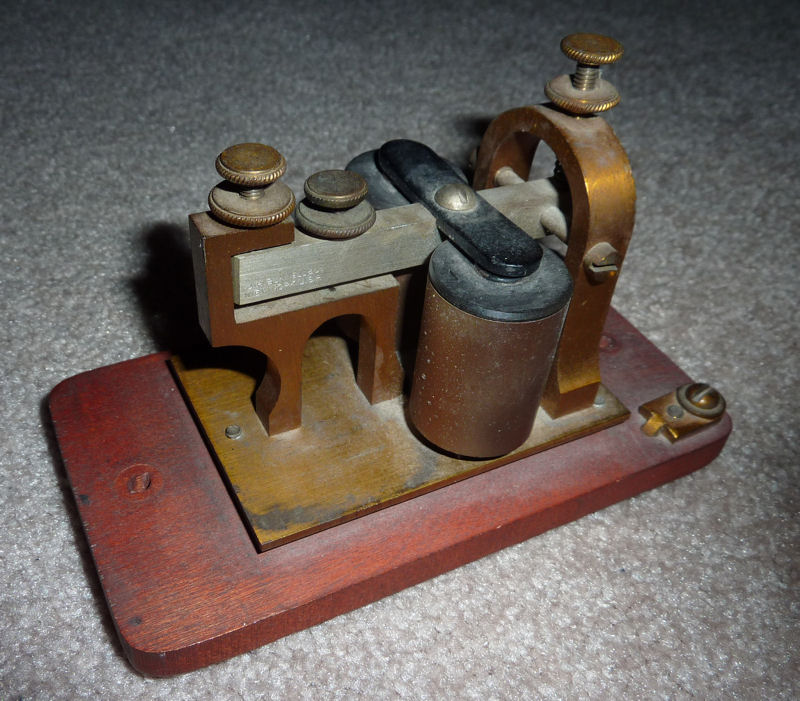The first telegraphs entered service in Canada at almost exactly the same time the country’s first railways were being built. Just seven years before Toronto’s first railway opened in 1853, Canada’s first telegraph message was sent from Hamilton to Toronto in 1846. This communication system used a series of dots and dashes called morse code, which was usually delivered auditorily in the form of long or short beeps to represent different letters of the alphabet. A device called a telegraph key was used to send messages while another device called a sounder was the receiver. Telegraphs naturally became an important communication tool in general but their usefulness would also make them the dominant form of railway communication – a position they held for over half a century until telephones started to replace them. When the Grand Trunk Railway was being built between Toronto and Montreal in the mid-1850’s, a subsidiary company called the Canada Grand Trunk Telegraph Company was responsible for erecting the telegraph wires parallel to the railway. In this way Canada’s railways were not only responsible for establishing critical transportation corridors, but also some of the country’s longest and most important lines of communication.
In these early days of railway operation, it was important for telegraphers to be positioned at regular intervals along a railway line. If a train was delayed or broken down, these lines of communication were the only way to relay that information fast enough to prevent other trains from potentially colliding with it. An employee called a station agent or station master was often the one who manned the telegraph, and in some cases passenger stations or telegraph offices were built in rural areas solely to ensure proper coverage. To relay information to the train crews themselves, a system was developed where the station agent would hand off written orders on a slip of paper. The system of Train Order Operation lasted for over a century in some parts of Canada, and it was only fully replaced once two-way radios and Centralized Traffic Control (CTC) were developed in the early to mid 20th century. The Canadian National Railways sent its last telegraph message in 1977.
In 2010, Dave Best donated a telegraph key and sounder to the TRHA:



